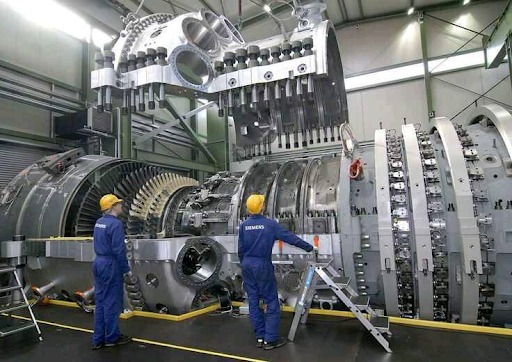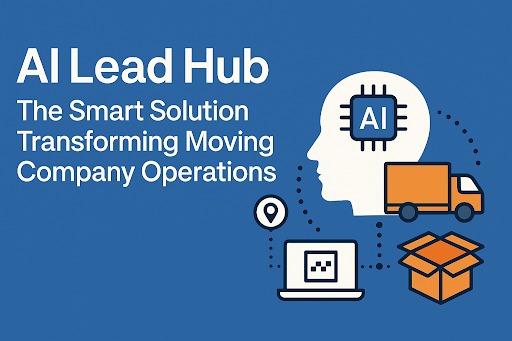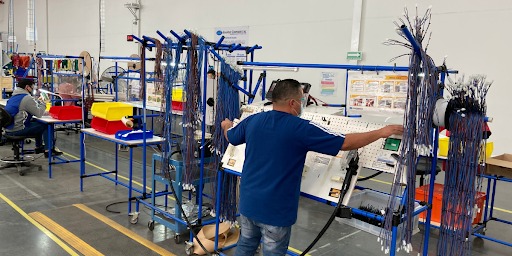The Future of Power Plant Maintenance: Embracing Automation and AI

Strong 8k brings an ultra-HD IPTV experience to your living room and your pocket.
In the rapidly evolving landscape of energy production, power plant maintenance plays a crucial role in ensuring the smooth and efficient operation of plants worldwide. Traditional maintenance methods have served their purpose, but as technology progresses, the future of power plant maintenance is moving towards a more sophisticated, automated, and intelligent approach. Embracing automation and artificial intelligence (AI) promises to transform maintenance strategies, increasing efficiency, reducing costs, and enhancing the overall reliability of power plants.
Power plants are critical infrastructures that require continuous monitoring, management, and upkeep. The integration of automation and AI technologies in power plant maintenance can improve predictive capabilities, streamline operations, and ensure plants remain operational for extended periods. In this article, we will explore how automation and AI are reshaping the maintenance industry, highlighting their benefits, challenges, and the path forward.
The Rise of Automation in Power Plant Maintenance
Automation in power plant maintenance is no longer a futuristic concept but a present reality. With advancements in digital technologies and smart sensors, power plants can now monitor their equipment and systems in real time. Automated systems can detect irregularities, perform diagnostics, and even initiate maintenance tasks without human intervention. This is a significant shift from traditional methods where human operators would need to manually inspect equipment, identify issues, and schedule repairs.
The most significant advantage of automation in maintenance is its ability to detect problems before they lead to failures. By continuously monitoring equipment and systems, automation can identify early warning signs of wear and tear, overheating, or malfunctions. This predictive maintenance allows operators to perform repairs or replacements at the optimal time, minimizing unplanned downtime and extending the life of equipment. As a result, plants can operate more efficiently, reducing operational costs and improving their bottom line.
Another benefit of automation is its ability to streamline routine tasks. Tasks such as cleaning, lubrication, and monitoring can be automated, freeing up human resources to focus on more complex issues. Automated systems can also optimize energy consumption, ensuring that power plants operate at peak performance levels while minimizing waste. These improvements not only enhance plant efficiency but also contribute to sustainability goals by reducing the plant's carbon footprint.
AI and Predictive Maintenance: A Game-Changer for Power Plants
While automation plays a vital role in streamlining processes, AI takes power plant maintenance to the next level by enabling predictive maintenance. Traditional maintenance approaches often rely on scheduled inspections or reactive measures, which can result in costly repairs and unscheduled downtime. Predictive maintenance, powered by AI, uses machine learning algorithms and data analytics to anticipate potential failures before they happen.
AI systems analyze vast amounts of data collected from sensors embedded in power plant equipment. By processing this data, AI can identify patterns and trends that may not be visible to human operators. For example, AI can detect subtle vibrations or temperature changes that indicate an impending failure. This data-driven approach allows maintenance teams to schedule interventions based on the condition of the equipment rather than on fixed timelines.
The power of AI lies in its ability to continually learn and improve. As AI systems gather more data over time, they become more accurate in predicting failures and optimizing maintenance schedules. This leads to a significant reduction in unexpected downtime and maintenance costs, as repairs are made only when necessary, rather than based on routine schedules.
Moreover, AI-powered predictive maintenance can optimize spare parts inventory management. By predicting the exact time when a part is likely to fail, AI systems can help maintenance teams ensure that the right spare parts are available at the right time, avoiding costly delays caused by missing components.
Enhancing Safety and Reducing Human Error with Automation and AI
One of the primary goals of integrating automation and AI in power plant maintenance is to improve safety. Power plants are complex environments that involve high-risk tasks, including working with heavy machinery, high-voltage systems, and hazardous materials. By automating repetitive or dangerous tasks, the risks to human workers are significantly reduced.
Automation can perform tasks such as inspecting hard-to-reach areas, operating heavy machinery, and even conducting emergency shut-downs. AI algorithms can also monitor real-time data to detect safety hazards, such as gas leaks or temperature spikes, and trigger automatic safety measures. This proactive approach not only protects workers but also ensures the safety and reliability of the entire plant.
Furthermore, AI-driven systems can help minimize human error in decision-making. While humans are susceptible to fatigue, distractions, and errors in judgment, AI systems are designed to operate with a high degree of accuracy and consistency. By supporting operators with real-time data and recommendations, AI can reduce the chances of costly mistakes, leading to safer and more efficient operations.
The Role of IoT in Smart Power Plant Maintenance
The Internet of Things (IoT) is another key technology driving the transformation of power plant maintenance. IoT refers to the network of interconnected devices that can collect, share, and analyze data in real time. In the context of power plant maintenance, IoT-enabled sensors are installed on equipment to monitor conditions such as temperature, pressure, vibration, and humidity.
The data collected by these sensors is transmitted to AI and automation systems for analysis. This real-time monitoring allows operators to track the performance of each asset and detect potential issues before they escalate. IoT devices also enable remote monitoring, allowing maintenance teams to access data and perform diagnostics from anywhere in the world. This reduces the need for on-site inspections and allows for faster response times in the event of a failure.
With the integration of IoT, power plants can create a digital twin—a virtual representation of the physical plant. This digital twin enables operators to simulate various scenarios, test new configurations, and predict the impact of different maintenance strategies. By using IoT data and AI algorithms, power plants can make more informed decisions, optimize maintenance schedules, and improve overall plant performance.
Overcoming Challenges in Adopting Automation and AI
Despite the many benefits, the adoption of automation and AI in power plant maintenance does come with challenges. One of the primary hurdles is the high initial investment required to implement these technologies. Power plants must invest in advanced sensors, AI software, and automation systems, which can be costly. Additionally, upgrading existing infrastructure to support these technologies may require significant downtime and operational disruptions.
There is also the challenge of integrating automation and AI with legacy systems. Many power plants still rely on outdated equipment and control systems that may not be compatible with modern technologies. The integration of AI and automation with these legacy systems requires careful planning and collaboration between engineers, IT specialists, and equipment manufacturers.
Another challenge is the need for skilled workers who can manage and operate advanced AI and automation systems. Power plants will require technicians, data scientists, and engineers who are proficient in AI, machine learning, and automation technologies. This may require retraining existing employees or hiring new talent with specialized expertise.
Future Prospects and Industry Outlook
The future of power plant maintenance is undeniably intertwined with the rise of automation and AI. As these technologies continue to evolve, they will offer even greater potential for optimizing plant operations, reducing downtime, and improving efficiency. The industry is already seeing the benefits of these innovations, and the next few years will likely witness widespread adoption across the globe.
In the coming years, we can expect to see more power plants embracing fully automated systems, where AI and automation handle the majority of maintenance tasks. With advancements in machine learning, predictive maintenance will become even more accurate, helping plants avoid costly failures and increase operational longevity. Furthermore, the integration of renewable energy sources and the push for sustainability will drive the demand for smarter and more efficient power plant operations.
As the energy sector continues to grow, the adoption of automation and AI will be essential in meeting the increasing demand for reliable, efficient, and sustainable energy production. The future of power plant maintenance is bright, and those who embrace these innovations will be at the forefront of shaping the energy landscape of tomorrow.
Note: IndiBlogHub features both user-submitted and editorial content. We do not verify third-party contributions. Read our Disclaimer and Privacy Policyfor details.







